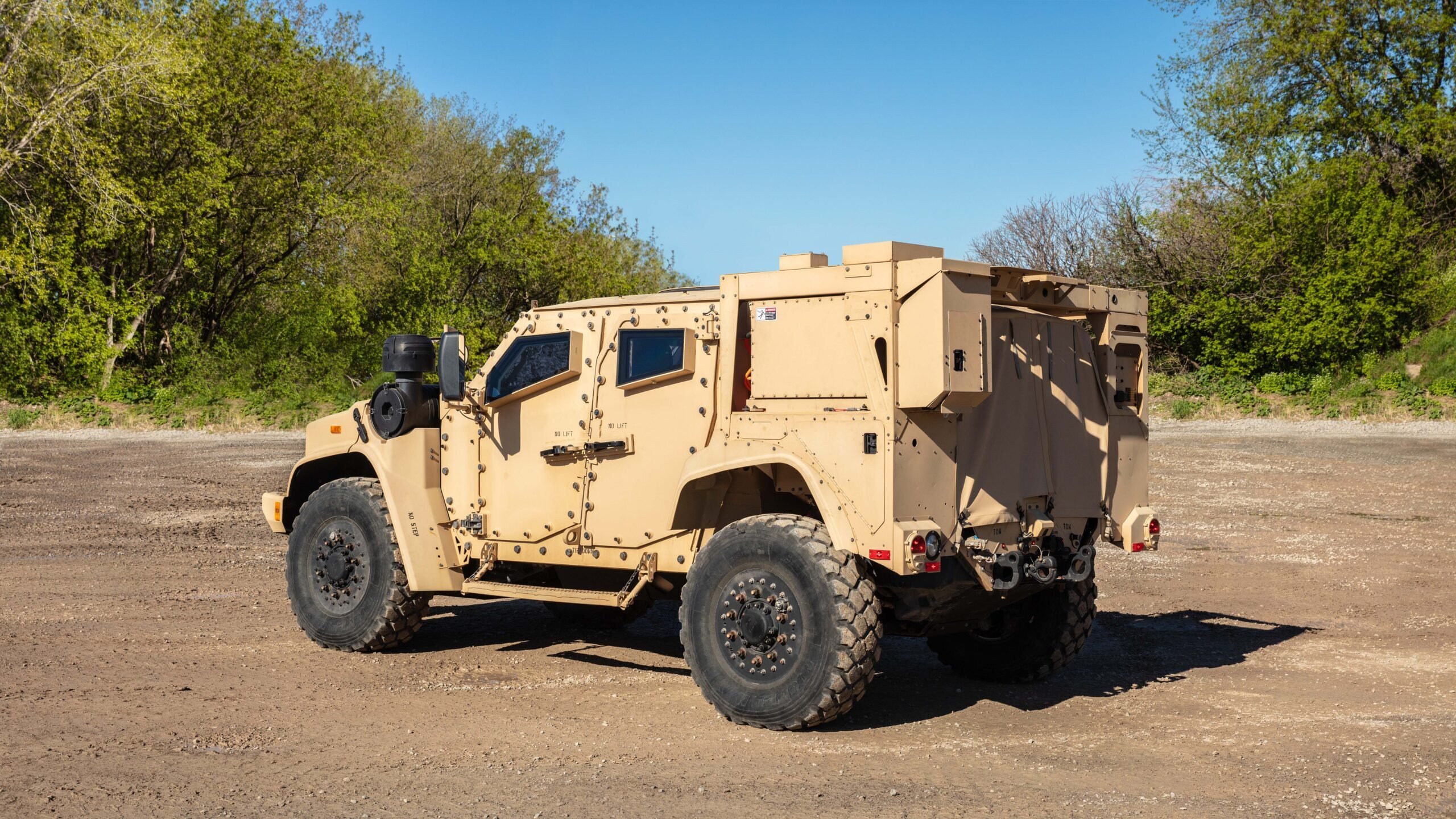Oshkosh Defense is building an electric JLTV. (Courtesy of Oshkosh)
NDIA TACTICAL WHEELED VEHICLES CONFERENCE: The Army’s plan to introduced and field hybrid-electric vehicles into its ground fleets is “pretty darn achievable” given the timelines laid out in the Army’s climate strategy and the current state of technology, a senior Army official said Tuesday.
The Army’s climate strategy, released last month, stated that the service planned to field “purpose-built” hybrid tactical vehicles by 2035 and fully electric tactical vehicles by 2050, in addition to developing a charging capability for those fully electric vehicles by 2050.
“I see some of those milestones and, especially if you look at 2035 to field something hybrid, … the technology is kind of there now,” said Michael Cadieux, director of the Army’s Ground Vehicles Systems Center, a research and development organization focused on ground vehicle technology, speaking at the NDIA Tactical Wheeled Vehicles Conference.
Vehicle electrification is one the GVSC’s four priority areas as the technology continues to advance and provide the Army with both fuel-savings and potential tactical advantages. Cadieux said that the service estimates that it will have more than 20% fuel-savings by introducing electrification kits into vehicles.
Dean McGrew, branch chief for powertrain electrification at the Ground Vehicle Systems Center, outlined numerous operational and logistical benefits of an electrified fleet of vehicles, like so-called “silent watch” offered by electric engines and mobility that could be useful on reconnaissance missions. Other benefits McGrew listed included onboard power for energy-based weapons systems, such as a directed energy weapons, radars or jammers. McGrew said that electrification would increase mobility and survivability with improved acceleration in the vehicles, while also extending operations between resupply due to anti-idling that doesn’t use up gas.
Logistically, they could plug into a host nation’s power grid for recharging, reducing the Army’s logistical burden. The Army could also use vehicle-to-grid power technology, which allows an electric battery to send power down a power grid to power “support base camps for expeditionary operations,” McGrew’s presentation said. Lastly, electrified vehicles would reduce the service’s maintenance and sustainment costs.
But while research and development leaders acknowledge the benefits hybrid or fully electric vehicles could provide, they are also realistic about the gaps. Army experts at the conference said battery energy density needed to improve in order to sufficiently power vehicles without taking up a substantial amount of space.
Cadiuex said the GVSC doesn’t plan to invest in battery technology. “Rather we’re looking at saying how can we specify a form factor or an architecture to take advantage of that technology,” Cadiuex said. “So as it continuously evolves and matures, as investment continues in that space, we can adopt that and we can integrate it.”
The service will also need a tactical recharging capability for fully electric vehicles — potentially in far-flung or dangerous environments. For example, McGrew said that the service would likely need a mobile charger with 15 megawatts of power to charge a fully electric tactical vehicles on the battlefield. The service’s current best mobile generator has a power of just .82 megawatts.
“The challenge for us to go all electric… it’s about energy storage density — putting all that energy into the vehicle — and the charge systems to be able to support it,” McGrew said.
But with those challenges looming, the Army is already taking notable steps toward hybrid-electric technology. Its Rapid Capabilities and Critical Technologies Office recently installed hybrid technology on a Bradley Fighting Vehicle. And industry is taking note of the Army’s signaling as well, demonstrated by Oshkosh Defense’s announcement that it had develop a hybrid-electric version of its Joint Light Tactical Vehicle. Late last year, the CEO of BAE Systems, Inc. told Breaking Defense that vehicle electrification is a “matter of timeline.”
While the Army looks at electrification for its non-tactical and tactical vehicles, any future plans to electrify heavy armor will be far more challenging.
“Frankly, as I look at tactical wheeled vehicles, those [technology] gaps aren’t as large … as we see in the ground combat side,” Cadiuex said. When it comes to the rest of the fleet, however, more issues emerge. “The gaps really become big when we’re talking 30-ton plus vehicles and the tracks,” he said.















